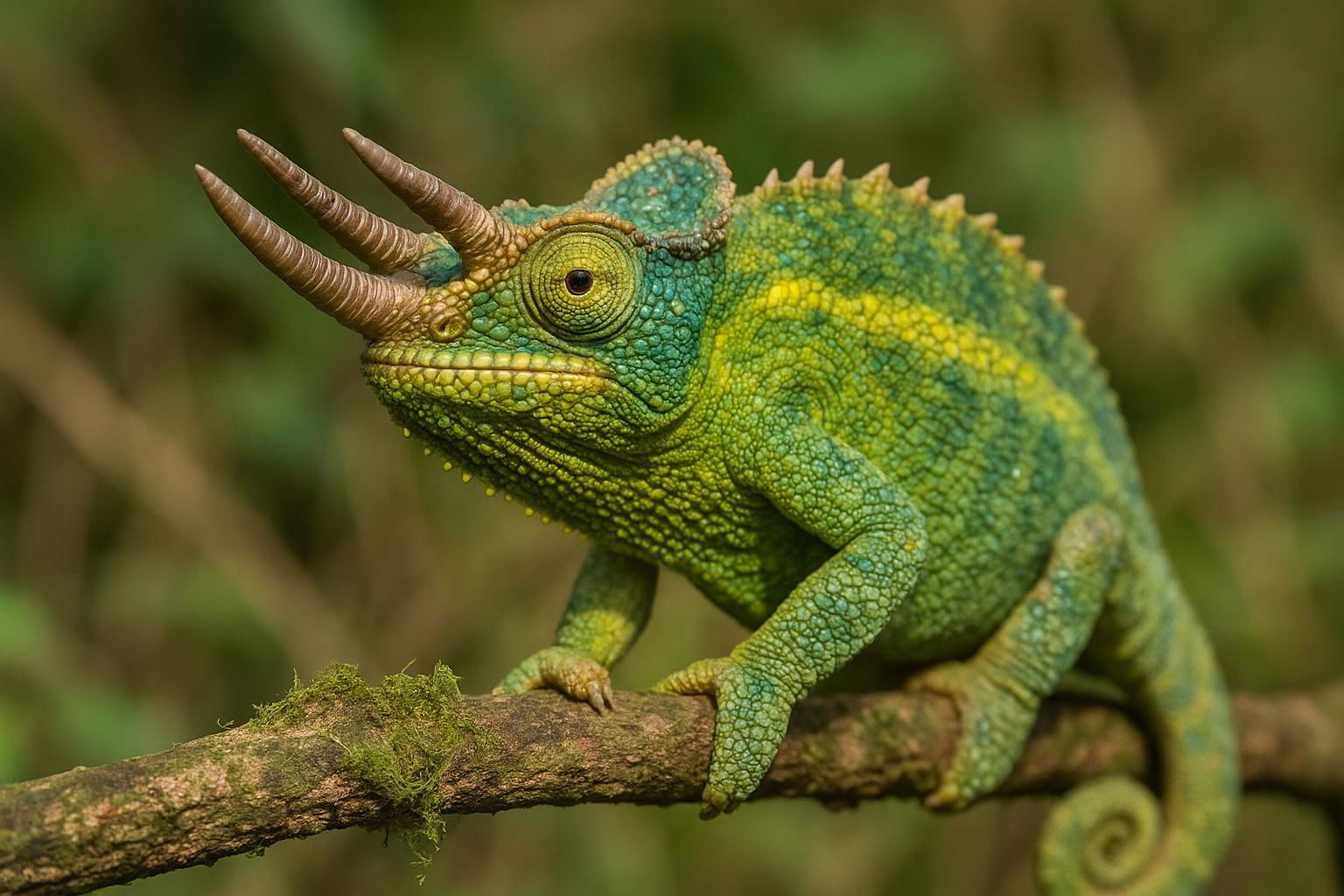
Jackson'S Chameleon
Trioceros jacksonii
Jackson's Chameleon, scientifically known as Trioceros jacksonii, is a captivating reptile native to the forested highlands of Kenya and Tanzania. Easily recognizable by its vivid green coloration, which may shift to hues of blue, yellow, or brown depending on its mood, this chameleon is especially noted for its three distinct horns. Prominent in males, these horns give the lizard a triceratops-like appearance, earning it the moniker "three-horned chameleon." Measuring between 9 to 13 inches in length, the species exhibits remarkable sexual dimorphism, with females being generally smaller and less horned.
Jackson's Chameleons are arboreal, spending most of their lives in trees, where their prehensile tails and zygodactylous feet aid in climbing and perching. Their independently rotating eyes offer a panoramic view of their environment, crucial for spotting prey such as insects, which they capture with their long, sticky tongues. This chameleon's unique ability to change color not only acts as camouflage but also serves as a form of communication during mating rituals or territorial disputes.
In addition to their captivating physical traits, Jackson's Chameleons are viviparous, giving birth to live young rather than laying eggs, an uncommon trait in reptiles. This species has been introduced to other areas including Hawaii, where it has become established in certain regions. As a pet, it fascinates with its slow, deliberate movements and other-worldly appearance, but it requires careful habitat management to thrive in captivity.

 All Species & Breeds
All Species & Breeds
 Highland Cattle
Highland Cattle
 Miniature Donkeys
Miniature Donkeys
 All Species Directory
All Species Directory
 Highland Cattle in Virginia
Highland Cattle in Virginia
 Miniature Donkeys in Texas
Miniature Donkeys in Texas












